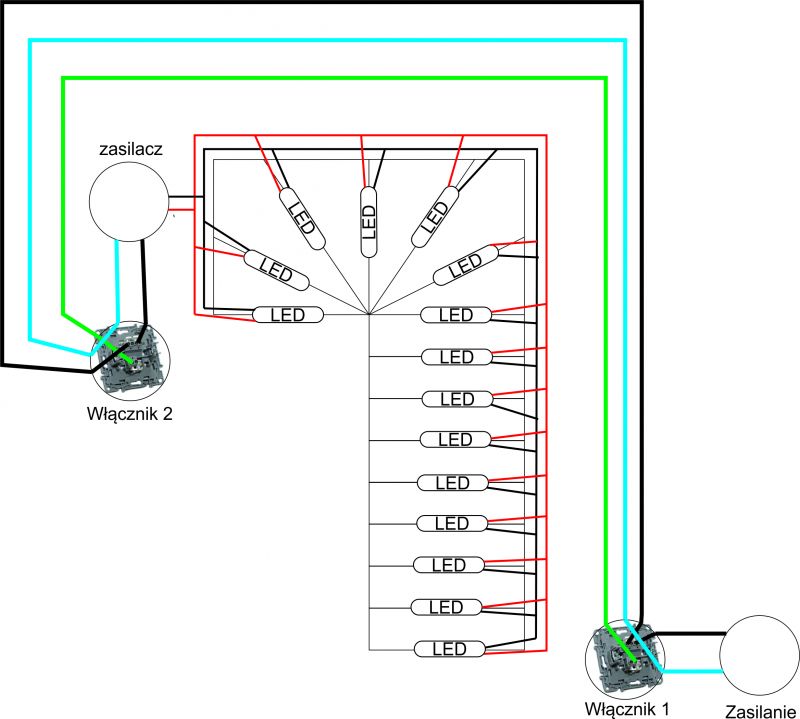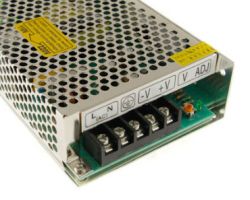Hello. I have to do the lighting of the stairs with aluminum profiles with led strip, and I wanted to use a motion sensor, but the client wanted to light the leds with variable switches. I'm sending the file and please tell me if it will be okay ... I think so, but I want to make sure

and now a few questions:
1) what is the cross-section of the cable from the power supply to the box? (I think wire, but what cross-section ... 2 * 1mm is enough?) and use the same cross-section between the switches? and then what cable from the power supply to the leds? (link, but what cross-section)
there are 15 degrees, the total length of the LEDs is about 13 m.

and now a few questions:
1) what is the cross-section of the cable from the power supply to the box? (I think wire, but what cross-section ... 2 * 1mm is enough?) and use the same cross-section between the switches? and then what cable from the power supply to the leds? (link, but what cross-section)
there are 15 degrees, the total length of the LEDs is about 13 m.



